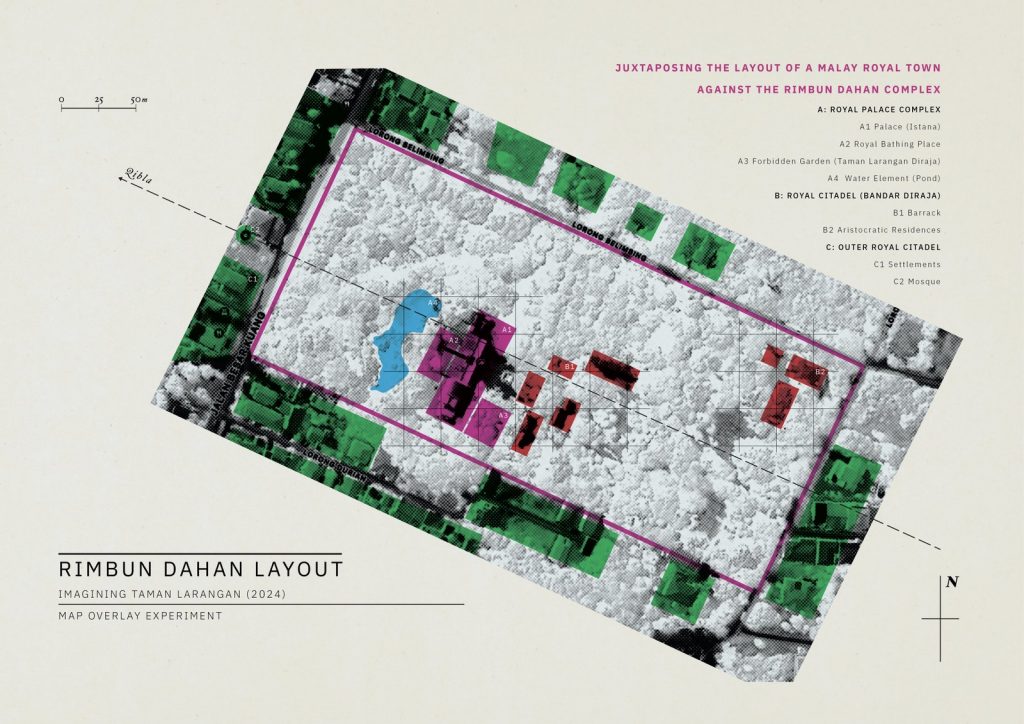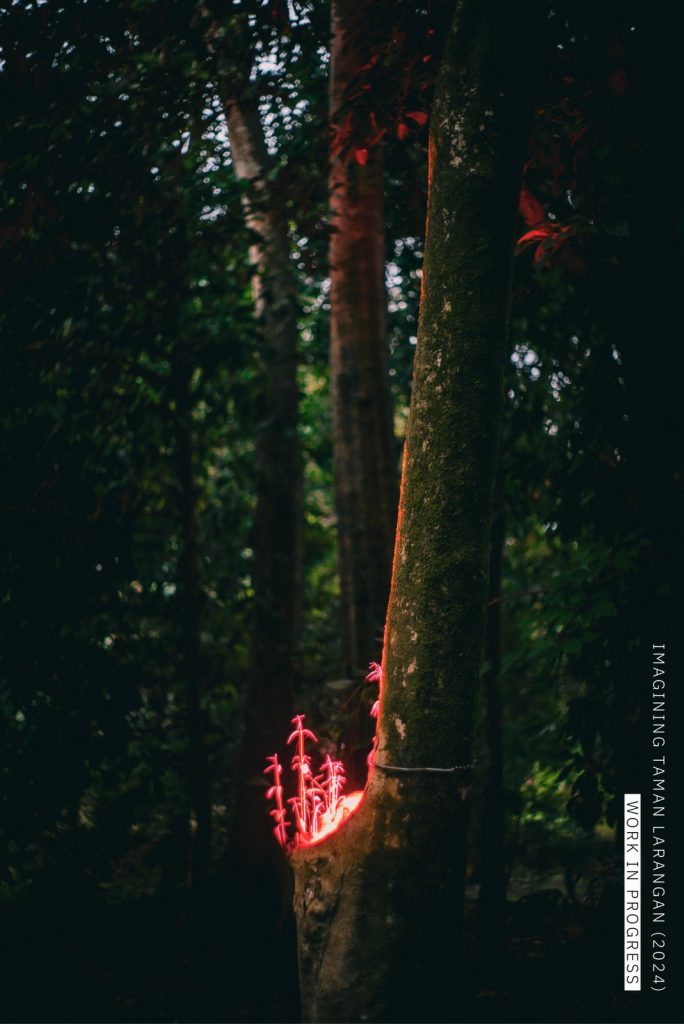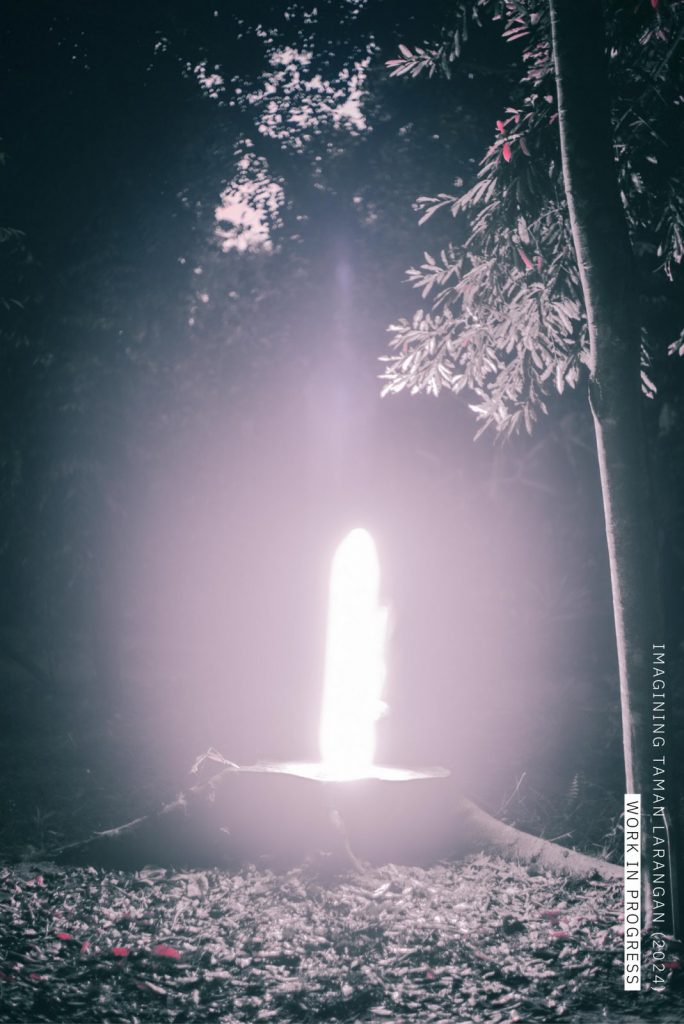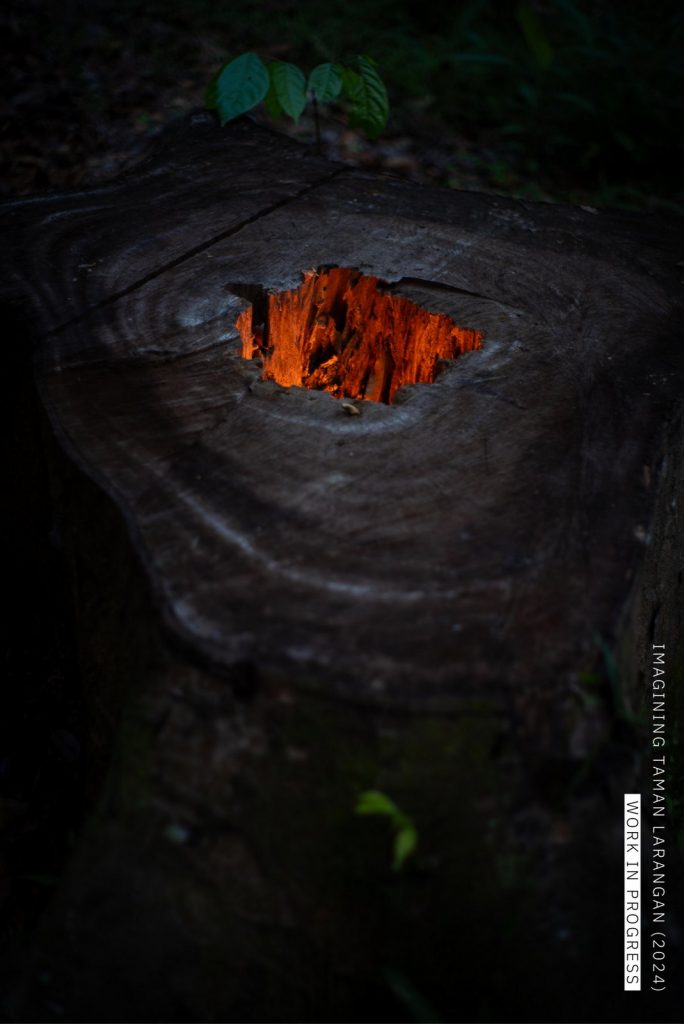Singapore-based filmmakers and visual artists Studio 1914 are in residence at Rimbun Dahan in February 2024.
About the Artists

Studio 1914, a Singapore-based art practice led by filmmakers and visual artists Adzlynn & Hong Hu, explores the intersections of Southeast Asian folktales, ecology, Generative Artificial Intelligence (GAI) art and experiential exhibitions.
They produced a video ‘Gambut’ which reflected on the futility of resolving the decades-long haze issue in Sumatra. It has been screened at the NTU Centre for Contemporary Art Singapore, VT Artsalon Taipei and George Town Festival. More recently, they created an AI-based animation piece ‘Madu’ featuring a Southeast Asian folktale for the National Museum of Singapore.
They were invited to curate a trilogy of experiential exhibitions as part of Rainbow Families SG, a queer art collective. The exhibitions took the form of temporary spatial interventions of defunct spaces at The Projector, a local independent cinema.
With moving images as their primary medium, they hope their works contribute to and encourage progressive conversations around navigating identities as Southeast Asians.
Website: studio-1914.com
Instagram: @studio1914
About the Residency
Since completing ‘Madu’, our AI-based animation featuring folktale ‘Hitam Manis and the Tualang Tree’, it sparked even more introspective conversations about biodiversity mentioned in Southeast Asian stories and how we relate to nature.
In our Hitam Manis animation, the term ‘Taman Larangan Diraja’ (Forbidden Garden) was a key visual space we had to design. These taman (gardens) are architectural spaces mentioned in the Sejarah Melayu and across other folktales from Southeast Asia. We wondered about the function and aesthetics of such gardens. In designing a fictional forbidden garden, do we make comparisons to actual historical royal gardens in Southeast Asia? What kind of biodiversity would the royal palaces have encouraged? Did any parts of their designs endure through to our modern times, if at all?
In our research, we noticed parallels between the layouts of forbidden gardens and Rimbun Dahan. We turn again to our palace gardener, Hitam Manis, for inspiration. What would it be like, if we were to imagine and design the scene of the ‘Forbidden Garden’ inspired by Rimbun Dahan?





